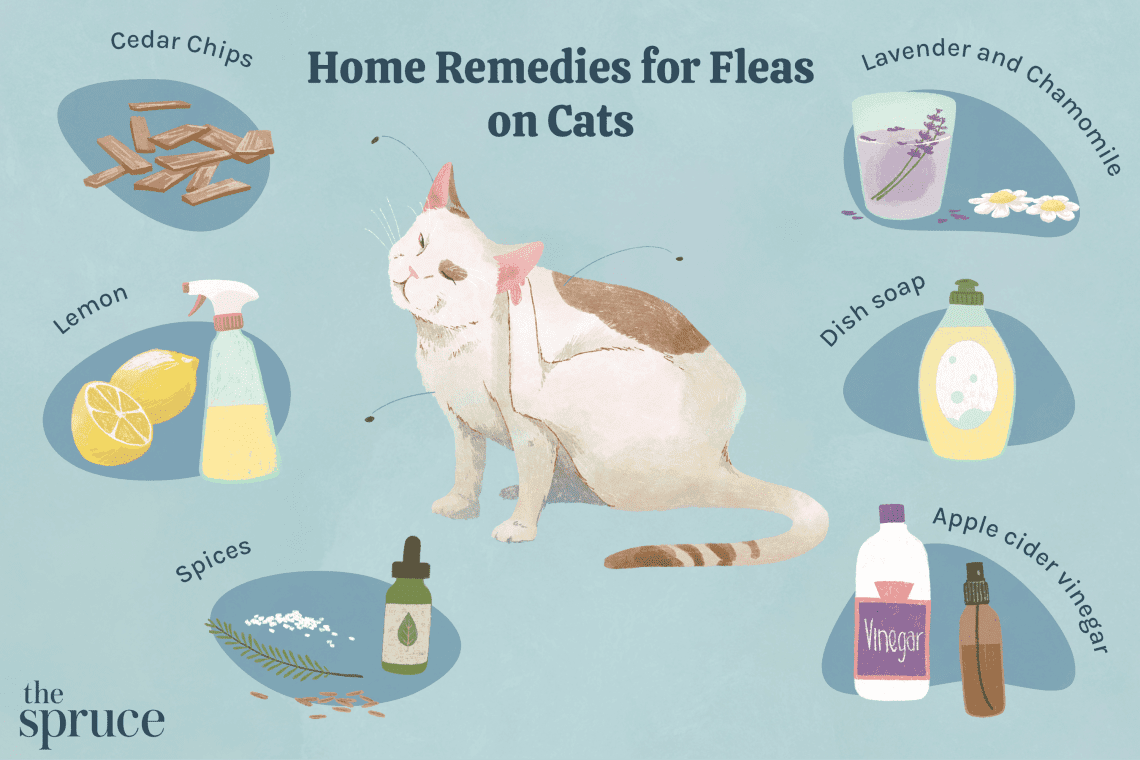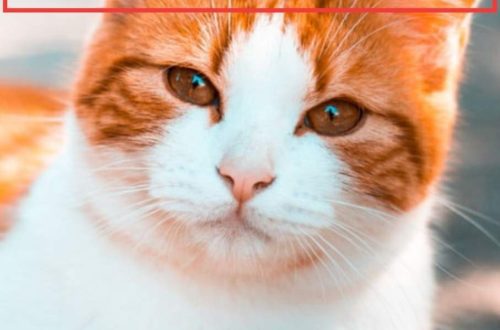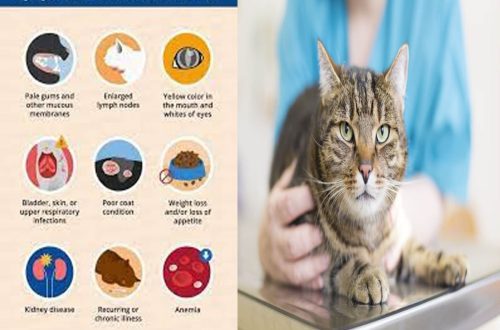
Fleas in cats – how to effectively remove fleas
Contents
- Why do cats get fleas
- Why are fleas dangerous?
- Symptoms of the presence of parasites
- Flea Removal Methods
- Pharmaceutical preparations for fleas
- Using flea collars
- Flea shampoos
- Folk methods of dealing with fleas
- What else can you do at home
- How to get rid of fleas in a pregnant cat
- Prevention of flea infestation
Why do cats get fleas
There are various ways of infecting an animal with fleas.
- Outdoor walk, and contact with an infected animal is not required. Parasites live in grass, sand, asphalt cracks.
- Human contact. Parasites are transmitted from the host. For example, when a person strokes a stray cat, fleas can jump onto clothes and then onto a pet.
- Transmission from the mother. If a pregnant cat is infected, there is a high chance of passing fleas on to newborns. Veterinarians recommend treating the animal’s body with special preparations before the birth of kittens.
- Contact with rodents during fishing.
- The presence of fleas at home, for example, if there is a dog that is taken outside.
Why are fleas dangerous?
Bloodsuckers pose a danger to the health of a cat, namely:
- are carriers of various diseases, including helminths, so the risk of helminthic invasion increases;
- on the skin of a cat, wounds form due to bites, as a result of which hair loss can occur. In addition, the coat fades and has an untidy appearance;
- insects multiply rapidly, and since fleas feed on blood, the pet is more likely to develop anemia. If it is a weakened cat or kitten, infection can be fatal;
- an allergic reaction is possible. The presence of fleas increases the risk of developing poorly healing wounds and boils, where allergens can enter.
The likelihood of infection increases in babies, older and debilitated cats due to low immunity.
In addition to harming the animal, fleas are dangerous to humans. A bite can cause a skin rash, dermatitis, infectious diseases, hematoma, an allergic reaction, up to anaphylactic shock. If an insect gets into food, poisoning is possible.
Symptoms of the presence of parasites
There are certain symptoms that indicate the presence of fleas. Signs of infection depend on the degree of spread of parasites.
1.
Only an attentive owner can detect the initial stage. At first, the animal behaves as usual. In the future, the cat begins to scratch.
2.
The following symptoms can be attributed to the second stage of infection:
- nervousness of the animal;
- the cat bites itself;
- loss of appetite, refusal of favorite foods;
- meow;
- sleep disturbance.
This period is characterized by a large number of fleas (up to 200 pcs.). Insects can be seen on the animal’s fur. A lot of bites and wounds appear on the cat’s body.
3.
The condition of the animal is noticeably deteriorating:
- increased irritability;
- the cat does not eat anything;
- weight is reduced;
- wool falls out in tufts;
- allergic dermatitis develops.
If the owner notices such symptoms in the animal, it is necessary to take action as soon as possible.
Flea Removal Methods
To cope with fleas in felines help:
- drugs;
- collars;
- folk methods;
- other methods.
The best effect is shown by a combination of several methods of struggle at the same time. It is advisable to consult a specialist before use, since in most cases the components are toxic to cats, although they act on insects. After the use of aggressive means, it is not always possible to save the animal.
Pharmaceutical preparations for fleas
In veterinary pharmacies, a large assortment of drugs for getting rid of fleas is presented.
Rolf Club 3D (drops)
The medicine is suitable for cats and kittens over 12 weeks old. Drops are designed for 1 dose. The contents are applied to dry skin between the shoulder blades. Due to this, the animal will not be able to lick the drug. The dosage of the drug depends on the weight of the pet:
- up to 4 kg – 0,5 ml;
- from 4 to 8 kg – 0,8 ml;
- over 8 kg – 0,125 ml / kg.
The drug protects the cat from ticks (for 30 days), fleas (up to 2 months), flying blood-sucking insects (7 days). Re-treatment can be carried out no earlier than a month later.
Contraindications:
- tendency to an allergic reaction to the components of the drug;
- infectious disease of an animal;
- pregnancy;
- feeding period;
- less than 12 weeks of age.
The cost is 300-500 rubles.
Bravecto (drops)
The drops are used for cats and kittens over 11 weeks old and weighing more than 1,2 kg. The dose is calculated based on the mass:
- from 1,2 to 2,8 kg – 0,4 ml;
- from 2,8 to 6,2 kg – 0,89 ml;
- more than 6,2 kg – 1,79 ml.
For treatment, 1 procedure is enough. For preventive purposes, it is necessary to carry out treatment every 3 months.
Contraindications:
- increased likelihood of allergies;
- the presence of wounds and lesions on the skin;
- age up to 11 weeks;
- weight up to 1,2 kg.
The cost is about 1300 rubles.
Frontline (spray)
Frontline is indicated for cats and kittens from 2 days after birth. Treat your pet in a well-ventilated area. To prevent the animal from licking off the preparation, it is better to buy a collar around the neck in advance. Before use, shake the bottle and, pressing the sprayer, treat the hair from a distance of about 15 cm. The amount of the product depends on the thickness and length of the cover and averages about 5 ml per kilogram of pet weight. You need to process the entire wool cover.
Contraindications:
- infection;
- high risk of allergies.
The cost is 1600-1900 rubles.
Inspector (drops)
The drug is intended for pets older than 7 weeks. The dosage depends on the weight of the cat:
- less than 1 kg – 0,05 ml / 0,5 kg;
- from 1 to 4 kg – 0,4 ml;
- from 4 to 8 kg – 0,8 ml;
- over 8 kg – 0,1 ml / kg.
Contraindications:
- the presence of an infectious disease;
- weakened cat;
- less than 7 weeks old.
With caution, the treatment of pregnant and lactating cats is allowed. It is necessary that the animal was under the supervision of a specialist.
The cost is 300-500 rubles.
Beafar (drops)
The medicine is indicated for animals over 2,5 kg and older than 6 months. The dosage depends on the weight of the pet:
- from 2,5 to 5 kg – 0,37 ml;
- more than 5 kg – 0,74 ml.
The volume of 1 pipette of the drug is 0,37 ml.
Contraindications:
- infection;
- pregnancy;
- feeding period;
- weight less than 2,5 kg;
- age less than 6 months.
The cost is about 800 rubles.
Advantage (drops)
This flea remedy is suitable for cats over 10 weeks old. Dosage according to weight:
- up to 4 kg – Advanced 40 1 pipette;
- from 4 to 8 kg – Advanced 80 1 pipette;
- over 8 kg – at the rate of 0,1 ml / kg.
Contraindications:
- allergy;
- infectious diseases;
- kitten under 2 months old.
The cost is about 300 rubles.
Fiprist (spray)
Fiprist for cats can be used from 7 days of age. The drug is available in various volumes: 100, 250, 500 ml.
Before use, shake the bottle and, pressing the sprayer, treat the wool at a distance of 10-20 cm. The average dosage is 3-6 ml per 1 kg. The amount of substance that is distributed with one click depends on the volume of the bottle:
- 100 ml – 0,5 ml;
- 250 ml – 1,5 ml;
- 500 ml – 3 ml.
Contraindications:
- infection;
- age less than 7 days;
- component intolerance.
The cost is about 200 rubles.
Other medications
In addition to the remedies listed above, for quick and guaranteed disposal of fleas, you can use drugs in the form of injections, but their use must be agreed with a veterinarian. The disadvantages of injections include high toxicity, so the dosage must be strictly observed. Among the most popular are the following:
- Ivermek. It is administered 1 time, but according to indications, the veterinarian may prescribe a second application. Helps to get rid of fleas in a short time. In some cases, the cat may notice increased urination and nervousness;
- Eprimek. It is a light yellow liquid. The solution can be administered subcutaneously or intramuscularly. It is forbidden to use the drug in case of an increased likelihood of an allergic reaction. If the recommended dosage is exceeded, the pet may notice strong arousal and frequent trips to the toilet;
- Lufenurol. It is a colorless liquid. The only drug of its kind that stops the development of flea larvae and prevents further reproduction. But among the pluses there is a minus – the reviews indicate little effectiveness against adult parasites, so you need to use the drug in conjunction with others. If you apply Lufenurol with a spray or drops, you can get rid of insects in a short period of time;
- Otodectin. It contains a small amount of hazardous substances, therefore its use during pregnancy is allowed, but only with the permission of a veterinarian.
In addition to injections, there are tablet preparations for fleas:
- Comfortis. Contains beef, so the pet will eat a tablet with pleasure. You can add it to your regular food. The action of the tablets persists for 1 month. The dosage is selected from the calculation – 50 mg / kg. It is not recommended to give to pregnant cats, kittens and elderly animals;
- Capstar. Has been on the market for over 10 years. The drug begins to act 2,5-3 hours after ingestion. It is allowed to give kittens from 1 month. It is believed that Capstar has no side effects.
Using flea collars
Collars are the simplest means of dealing with fleas. It is allowed to use them both for prevention and for therapeutic purposes. The coating is impregnated with substances that are harmful to insects. Positive properties:
- simplicity;
- ideal for animals that do not like to swim;
- the possibility of use for pregnant cats and small kittens;
- versatility – the collar protects against fleas and ticks at the same time;
- prolonged action – from 1 to 5 months.
In addition to the advantages, flea collars also have negative qualities:
- the likelihood of injury (for example, if the cat is caught on something by the collar);
- the service life is reduced if the collar gets wet;
- effectiveness depends on the individual characteristics of the animal and its state of health.
Before buying a collar for a cat, it is better to consult a veterinarian. The most popular brands include: Beafar, Foresto, Kiplix, Bolfo, Bars from fleas.
Flea shampoos
To wash the animal, you can use special flea shampoos, which are sold in veterinary pharmacies. They have little toxicity, and are suitable for pregnant and elderly cats, kittens. The most popular firms: Lugovoi, Celandine, Phytoelita.
Folk methods of dealing with fleas
To get rid of fleas, you can use folk methods, but it is recommended to use them in conjunction with pharmaceuticals. This is the only way to increase the efficiency of use. The most popular recipes are listed below.
- To prepare the product, you will need salt and a warm infusion of celandine at the rate of 50 g of the product per 1 liter of liquid. Mix everything thoroughly. Place the animal in the liquid up to the neck and hold for 5-10 minutes.
- Take 2 cloves of garlic and crush to a pulp. Add 700 ml of water. Leave all night. In the morning, rub the resulting infusion into the cat’s coat, wash with flea shampoo, comb out with a comb.
- Take 20 g dry and 40 g fresh wormwood. Pour the mixture with 2 cups of water. Cook over low heat for 10-15 minutes. Cool and apply the resulting mixture to the coat, wash with shampoo, comb out with a comb.
What else can you do at home
It is necessary to thoroughly wash the apartment, paying attention to the cat’s favorite places (couch, scratching post, place to eat). Bedding for sleep is best washed at a high temperature, after which treatment with a flea remedy is necessary. It is also desirable to apply it to the walls and floor (up to 1,5 m in height). To finally drive fleas out of the house, you can spread bunches of fresh or dry wormwood along the baseboard and in the corners.
How to get rid of fleas in a pregnant cat
If the cat is pregnant, you need to choose a flea remedy with extreme caution, since the life of kittens depends on the health of the animal. With the wrong choice, there is a possibility of miscarriage, congenital pathologies or death after birth. Before removing fleas from a cat in position, it is recommended to consult with a veterinarian to select the most optimal remedy.
Injectables are not recommended for pregnant cats as they are toxic. The use of Comfortis tablets is also prohibited. The best option would be to use collars and shampoos. In agreement with a specialist, drops can be applied to the withers.
Prevention of flea infestation
To avoid infection, it is necessary to observe preventive measures:
- inspect your pet daily to spot fleas as early as possible;
- Bathe your pet regularly with flea shampoo.
- periodically wash the bed, adding flea remedies to the water, as insects can accumulate in it;
- do not let your pet go outside (fleas in a domestic cat appear much less often, but if she asks to go outside, after each walk it is recommended to carry out bath procedures using antiparasitic shampoo);
- put on a pet collar from ticks and fleas;
- for additional protection, you can periodically use drugs.
To destroy fleas, there are various means – drops, sprays, shampoos, collars – so dealing with the parasite is not too difficult. The most important thing is to use the drugs in accordance with the instructions.





